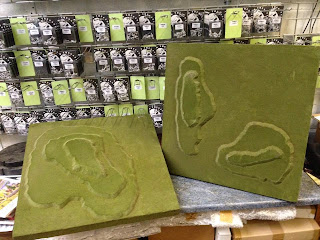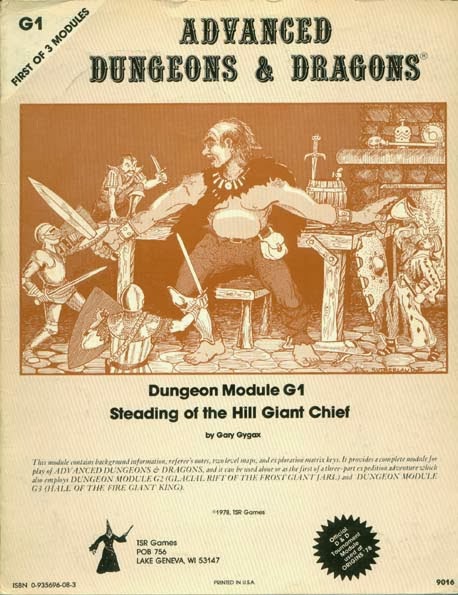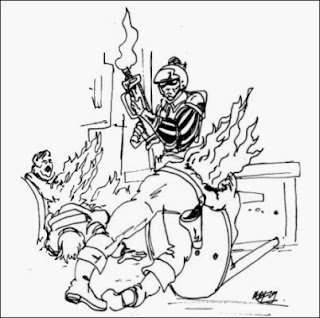Occasionally in this Life in Miniature, I 'be been around successful protects, at GW late in the 80's they came thick and fast, in the 90's it was amazing to watch Magic: the Gathering grow from nothing to a world beater, but TTG's little (micro) success, stems from the summer 1983 launch of Challenger, the 1/300 scale micro-tank game set in the 'Ultra Modern' period.
Challenger, written by Bruce Rea-Taylor, and published through Table Top Games, is a simulation wargame based on the supposed escalation of the NATO/WarPact Cold War to a point where hoards of Soviet Armoured Divisions roamed into Western Wargamerland.
Quiet if this was simulation, dystopian fiction or wish fulfilment, I can't really say, At what point would a Soviet invasion of Western Europe, have not provoked a nuclear response, and made all these tiny tanks piles of radioactive dust? Or maybe this was after 'the bomb' and the elephant in the room was that all these little model towns, hills and road junctions were already a radio active wastelands, but still strategically important... in either case, a certain type of British gamer started to lap it up, and Ultra Modern was a big success, in TTG terms, for the remainder of the 80's.
Within a year or so it was adopted for Nation Championship play, making it the game of choice for both Marxist teachers and Civil servants, looking to advance the cause of Communism, and camo-jacketed maths junkies, holding out for Freedom.
Over the next 10 years Challenger and all it's updates, digests, and army lists would keep TTG in a steady stream of sales that drove the tiny company forwards, and I think this period was the happiest I ever saw Bob, he liked the rules, he loved the period, and he was great chums with Bruce, a larger than life figure, who quiet clearly loved his hobby, and the (niche-sized) recognition it brought him.
Bruce's Rules (published through TTG)
 |
| No pictures of Challenger I on t'interweb, unless you know better... |
Challenger
Challenger Revised Edition
Challenger II
Challenger 2000
Battlezones - Scenarios for the Ultra Modern Period
Corps Commander OMG (Div Scale)
Firefight (Modern Skirmish)
Ultra Modern Army Lists and Organisation Volume 1 Challenger
Ultra Modern Army Lists & Organisation Volume 2
Challenger
Digest No. 3 - Challenger / Corps Commander
Digest 4 Ultra Modern Army Lists for Challenger II Rules
Digest 5 Ultra Modern Army Lists for Challenger II Rules
Modern Aircraft Handbook - Aircraft Details & Weapons
for Challenger II
Revised Modern Aircraft Handbook - Aircraft Details &
Weapons for Challenger II
Bob used to clean up on the miniature sales for the games too, buying in Skytrex, and Heroics and Ross, tanks and vehicles, the only brands available freely in the UK, and stripping them from their packaging and reselling them at just below original price... Those camo-jacketed gamers could be seen in droves at any show TTG attended, heads down perusing lists and scraps of paper for micro armour at 33pence a pop...
On a couple of occasions both Skytrex and H&R both put a stop on selling to Bob, he just bought around through other people, before getting back into good-books with both companies, and at least once trying to buy Skytrex's range to tie our rules to their models.
Bruce died suddenly in the late 80's, from what I suspect would be described as a life-style related condition, smoking or weight related, and Bob would never be the same person after, the wind gone from his sails...
Ok then, and now for the odd coincidence, on the very same day the TTG took delivery of the first batch of Challenger rules (mid-summer '83?) Bob had a visit from a chap, whose name I never knew, who bought samples of his new companies product to 'pitch', polystyrene terrain and tiles.
 |
| 2 of the first poly tiles in the world... |
I remember Kate saying, "what fools are going to pay £6 for 2 feet of polystyrene covered in green flock?" with complete disdain... seconds before Mark and I tore into the stock to buy up whatever stock Bob had acquired minutes earlier...
And that's the way it went, gamers knew a great idea when they saw it, and TTG would sell out of Integral Terrain whenever we got new stock in, what gamers had used previously; green baize or cloth, was cheap and easy, but looked bad, plywood tiles with Tetrion 'hard modeled' on looked good, but needed a village hall to store it in, and a team of volunteers to lift into place, sand-trays were versatile but heavy and attracted cats (!!!)... polystyrene solved a load of these problems, light, adaptable and uniform they gave a gamers a handy battlefield that could be changed to suit many games and was easy to break down and store in a small (ish) area.
So on that evening, Mark bought half a dozen T72's and M60's, which he quickly daubed with green and olive paint, and the pair of us tried, almost in vain, to get some kind of enjoyment out of the maths equation that was Challenger...
I can't say ever I did get a great deal of mirth from the game, then, or on any of the two or three occasions I've played since, but on that night, with some brand new Ultra Modern rules in hand, and some state of the art polystyrene terrain to play on, we could definitely say, the 80's started here...




































